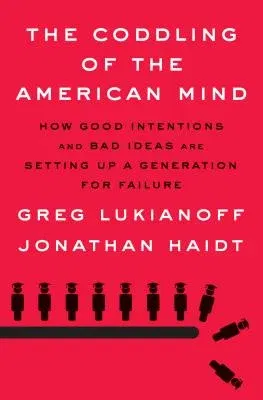New York Times Bestseller - Finalist for the 2018 National Book
Critics Circle Award in Nonfiction - A New York Times Notable Book
- Bloomberg Best Book of 2018
"Their distinctive contribution to the higher-education debate is to
meet safetyism on its own, psychological turf . . . Lukianoff and Haidt
tell us that safetyism undermines the freedom of inquiry and speech that
are indispensable to universities." --Jonathan Marks, Commentary
"The remedies the book outlines should be considered on college
campuses, among parents of current and future students, and by anyone
longing for a more sane society." --Pittsburgh Post-Gazette
Something has been going wrong on many college campuses in the last few
years. Speakers are shouted down. Students and professors say they are
walking on eggshells and are afraid to speak honestly. Rates of anxiety,
depression, and suicide are rising--on campus as well as nationally. How
did this happen?
First Amendment expert Greg Lukianoff and social psychologist Jonathan
Haidt show how the new problems on campus have their origins in three
terrible ideas that have become increasingly woven into American
childhood and education: What doesn't kill you makes you weaker;
always trust your feelings; and life is a battle between good people
and evil people. These three Great Untruths contradict basic
psychological principles about well-being and ancient wisdom from many
cultures. Embracing these untruths--and the resulting culture of
safetyism--interferes with young people's social, emotional, and
intellectual development. It makes it harder for them to become
autonomous adults who are able to navigate the bumpy road of life.
Lukianoff and Haidt investigate the many social trends that have
intersected to promote the spread of these untruths. They explore
changes in childhood such as the rise of fearful parenting, the decline
of unsupervised, child-directed play, and the new world of social media
that has engulfed teenagers in the last decade. They examine changes on
campus, including the corporatization of universities and the emergence
of new ideas about identity and justice. They situate the conflicts on
campus within the context of America's rapidly rising political
polarization and dysfunction.
This is a book for anyone who is confused by what is happening on
college campuses today, or has children, or is concerned about the
growing inability of Americans to live, work, and cooperate across party
lines.

